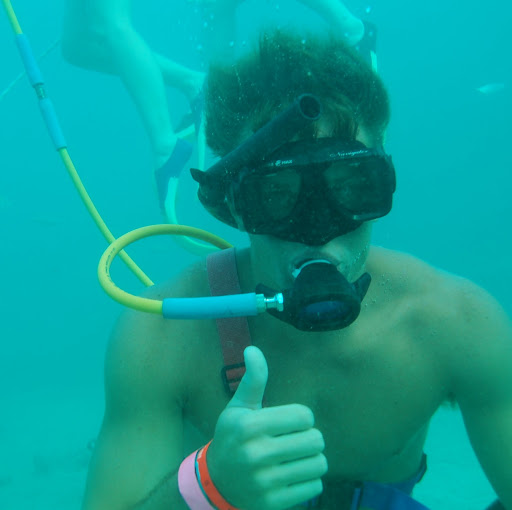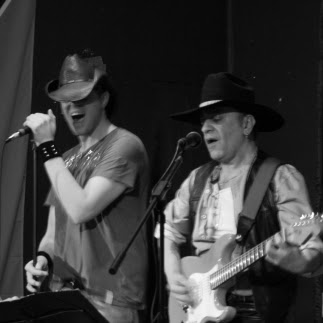Steven Roger Frank
age ~48
from Dallas, TX
- Also known as:
-
- Steven R Frank
- Steven Russell Frank
- Steve R Frank
- Steven R Schneider
- Frank R Steven
- Frank Steve
- Phone and address:
- 6709 Roundrock Rd, Dallas, TX 75248
Steven Frank Phones & Addresses
- 6709 Roundrock Rd, Dallas, TX 75248
- Newburgh, IN
- Evansville, IN
Name / Title
Company / Classification
Phones & Addresses
Vice-President
THE GEORGE D. ALAN COMPANY
Trade Contractor · Residential Construction · Remodeling · Waterproofing Contractors · Other Building Finishing Contrs
Trade Contractor · Residential Construction · Remodeling · Waterproofing Contractors · Other Building Finishing Contrs
2205 Century Cir, Irving, TX 75062
2158 W Northwest Hwy, Dallas, TX 75220
2144969999, 9725541428, 2144969998
2158 W Northwest Hwy, Dallas, TX 75220
2144969999, 9725541428, 2144969998
ADVANCED DEFENSE PRODUCTS LLC
J & J WHOLESALING, LTD
ICHO DAIKO, INC
SANCTORUM
Director, Vice-President
HARVEST RIDGE HOME OWNERS ASSOCIATION, INC
Civic/Social Association
Civic/Social Association
3102 Oak Lawn Ave STE 202, Dallas, TX 75219
2711 N Haskell Ave, Dallas, TX 75204
13113 Berrywood Trl, Keller, TX 76244
2711 N Haskell Ave, Dallas, TX 75204
13113 Berrywood Trl, Keller, TX 76244
Director, President
VERDE MAR DIVERS INC
Mfg Sporting/Athletic Goods Whol Sporting/Recreational Goods
Mfg Sporting/Athletic Goods Whol Sporting/Recreational Goods
20 Creekmere Dr, Roanoke, TX 76262
20 Creekmore Dr, Roanoke, TX 76262
8177410751
20 Creekmore Dr, Roanoke, TX 76262
8177410751
Medicine Doctors

Steven R. Frank
view sourceSpecialties:
Podiatric Medicine
Work:
Family Foot Care LLC
1475 Kisker Rd STE 260, Saint Charles, MO 63304
6369284447 (phone), 6369284497 (fax)
Steven Frank DPM LLC
12855 N 40 Dr STE 240, Saint Louis, MO 63141
3144349600 (phone), 3144349601 (fax)
Family Foot Care LLC
300 Medical Plz STE 122, Lake Saint Louis, MO 63367
6369284447 (phone), 6366250060 (fax)
1475 Kisker Rd STE 260, Saint Charles, MO 63304
6369284447 (phone), 6369284497 (fax)
Steven Frank DPM LLC
12855 N 40 Dr STE 240, Saint Louis, MO 63141
3144349600 (phone), 3144349601 (fax)
Family Foot Care LLC
300 Medical Plz STE 122, Lake Saint Louis, MO 63367
6369284447 (phone), 6366250060 (fax)
Procedures:
Hallux Valgus Repair
Conditions:
Hallux Valgus
Plantar Fascitis
Tinea Pedis
Plantar Fascitis
Tinea Pedis
Languages:
English
Description:
Dr. Frank works in Saint Louis, MO and 2 other locations and specializes in Podiatric Medicine. Dr. Frank is affiliated with Barnes Jewish Hospital, Missouri Baptist Medical Center and SSM Health St Joseph Hospital Lake Saint Louis.
Isbn (Books And Publications)





Dynamics of Cancer: Incidence, Inheritance, and Evolution
view sourceAuthor
Steven A. Frank
ISBN #
0691133654

Dynamics of Cancer: Incidence, Inheritance, and Evolution
view sourceAuthor
Steven A. Frank
ISBN #
0691133662

Intellectual Property For Managers and Investors: A Guide To Evaluating, Protecting and Exploiting IP
view sourceAuthor
Steven J. Frank
ISBN #
0521851068

Learning the Law : Success in Law School and Beyond
view sourceAuthor
Steven J. Frank
ISBN #
0806513578
Wikipedia References

Steven Frank
Work:
Position:
Author
Skills & Activities:
Skill:
Macintosh • Software

Steven Frank (Biologist)
Us Patents
-
Thermal Isolation Of Hybrid Thermal Detectors Through An Anisotropic Etch
view source -
US Patent:55720595, Nov 5, 1996
-
Filed:Jun 7, 1995
-
Appl. No.:8/477718
-
Inventors:William K. Walker - Plano TX
Steven N. Frank - McKinney TX
Charles M. Hanson - Richardson TX
Robert J. S. Kyle - Rowlett TX
Edward G. Meissner - Dallas TX
Robert A. Owen - Rowlett TX
Gail D. Shelton - Mesquite TX -
Assignee:Texas Instruments Incorporated - Dallas TX
-
International Classification:H01L 27095
-
US Classification:257448
-
Abstract:A thermal isolation structure (10) is disposed between a focal plane array and an integrated circuit substrate (12). The thermal isolation structure (10) includes a mesa-type formation (16) and a mesa strip conductor (18, 26) extending from the top of the mesa-type formation (16) to an associated contact pad (14) on the integrated circuit substrate (12). After formation of the mesa-type formation (16) and the mesa strip conductor (18, 26), an anisotropic etch using the mesa strip conductor (18, 26) as an etch mask removes excess mesa material to form trimmed mesa-type formation (24) for improved thermal isolation. Bump bonding material (20) may be deposited on mesa strip conductor (18, 26) and can also be used as an etch mask during the anisotropic etch. Thermal isolation structure (100) can include mesa-type formations (102), each with a centrally located via (110) extending vertically to an associated contact pad (104) of integrated circuit substrate (106). A conductor (108) is deposited on top of mesa-type formation (102), along the walls of via (110), and overlaying contact pad (104).
-
Multiple Level Mask For Patterning Of Ceramic Materials
view source -
US Patent:55870902, Dec 24, 1996
-
Filed:Apr 4, 1994
-
Appl. No.:8/222146
-
Inventors:James F. Belcher - Plano TX
Steven N. Frank - McKinney TX
John P. Long - Garland TX
Jeanee Jones - Plano TX -
Assignee:Texas Instruments Incorporated - Dallas TX
-
International Classification:B44C 122
C03C 1500 -
US Classification:216 17
-
Abstract:A novel multiple level mask (e. g. tri-level mask 36) process for masking achieves a desired thick mask with substantially vertical walls and thus improves the ion milling process of ceramic materials (e. g. BST). An embodiment of the present invention is a microelectronic structure comprising a ceramic substrate, an ion mill mask layer (e. g. photoresist 42) overlaying the substrate, a dry-etch-selective mask layer (e. g. TiW 40) overlaying the ion mill mask layer, the dry-etch-selective mask layer comprising a different material than the ion mill mask layer, a top photosensitive layer (38) overlaying the dry-etch-selective mask layer, the top photosensitive layer comprising a different material than the dry-etch-selective mask layer, and a predetermined pattern formed in the top photosensitive layer, the dry-etch-selective mask layer and the ion mill mask layer. The predetermined pattern has substantially vertical walls in the ion mill mask layer.
-
Inter-Pixel Thermal Isolation For Hybrid Thermal Detectors
view source -
US Patent:54245443, Jun 13, 1995
-
Filed:Apr 29, 1994
-
Appl. No.:8/235835
-
Inventors:Gail D. Shelton - Mesquite TX
James F. Belcher - Plano TX
Steven N. Frank - McKinney TX
Charles M. Hanson - Richardson TX
Edward G. Meissner - Dallas TX
Robert A. Owen - Rowlett TX -
Assignee:Texas Instruments Incorporated - Dallas TX
-
International Classification:H04N 533
-
US Classification:250332
-
Abstract:A thermal detection system (100, 200) includes a focal plane array (102, 202), a thermal isolation structure (104, 204) and an integrated circuit substrate (106, 206). The focal plane array (102, 202) includes thermal sensors (114, 214) formed from a pyroelectric element (116, 216), such as barium strontium titanate (BST). One side of the pyroelectric element (116, 216) is coupled to a contact pad (110, 210) disposed on the integrated circuit substrate (106, 206) through a mesa strip conductor (112, 212) of the thermal isolation structure (104, 204). The other side of the pyroelectric element (116, 216) is coupled to a common electrode (120, 220). In one embodiment, slots (128) are formed in the common electrode (120) intermediate the thermal sensors (114) to improve inter-pixel thermal isolation. In another embodiment, slots (236) are formed in the optical coating (224) to improve inter-pixel thermal isolation. The common electrode (120, 220) may be formed from a thermally insulating material, such as a silicon monoxide and chromium matrix (cermet) or other metal oxide.
-
Novel Method For Catalyst Application To A Substrate For Fuel Cell Electrodes
view source -
US Patent:42294908, Oct 21, 1980
-
Filed:Sep 1, 1978
-
Appl. No.:5/938748
-
Inventors:Steven N. Frank - McKinney TX
James G. Frank - Garland TX -
Assignee:Texas Instruments Incorporated - Dallas TX
-
International Classification:B05D 512
-
US Classification:427113
-
Abstract:An improved method of making a fuel cell electrode wherein a thin carbonized paper-like substrate is first impregnated with an electrolyte-repelling material, and thereafter a thin layer of catalyst material is screen printed thereupon.
-
Method For Forming Electrical Contact To The Optical Coating Of An Infrared Detector From The Backside Of The Detector
view source -
US Patent:56460660, Jul 8, 1997
-
Filed:Mar 1, 1995
-
Appl. No.:8/396944
-
Inventors:Steven N. Frank - McKinney TX
James F. Belcher - Plano TX
Charles E. Stanford - Plano TX
Robert A. Owen - Rowlett TX
Robert J. S. Kyle - Rowlett TX -
Assignee:Texas Instruments Incorporated - Dallas TX
-
International Classification:H01L 2144
-
US Classification:437180
-
Abstract:This is a system and method of forming an electrical contact to the optical coating of an infrared detector. The method may comprise: forming thermal isolation trenches 22 in a substrate 20; depositing a trench filler 24 in the thermal isolation trenches 22; depositing a common electrode layer 31 over the thermal isolation trenches 22; depositing an optical coating 26 above the common electrode layer 31; mechanically thinning the substrate to expose the trench filler 24; etching to remove the trench filler 24 in the bias contact area; depositing a contact metal 34 on the backside of the substrate 20, wherein the contact metal 34 connects to the common electrode layer 31 at bias contact areas 34 around a periphery of the thermal isolation trenches; and etching the contact metal 34 and the trench filler 24 to form pixel mesas of the contact metal 34 and the substrate 20. Bias contact vias 23 may be formed in the bias contact areas and then filled with bias contact metal 49. Alternately, the bias contact vias may also be filled with the contact metal 34.
-
Method For Forming Electrical Contact To The Optical Coating Of An Infrared Detector From The Backside Of The Detector
view source -
US Patent:56960026, Dec 9, 1997
-
Filed:Apr 19, 1996
-
Appl. No.:8/635047
-
Inventors:Steven N. Frank - McKinney TX
James F. Belcher - Plano TX
Charles E. Stanford - Plano TX
Robert A. Owen - Rowlett TX
Robert J. S. Kyle - Rowlett TX -
Assignee:Texas Instruments Incorporated - Dallas TX
-
International Classification:H01L 3118
-
US Classification:437 2
-
Abstract:This is a system and method of forming an electrical contact to the optical coating of an infrared detector. The method may comprise: forming thermal isolation trenches 22 in a substrate 20; depositing a trench filler 24 in the thermal isolation trenches 22; depositing a common electrode layer 31 over the thermal isolation trenches 22; depositing an optical coating 26 above the common electrode layer 31; mechanically thinning the substrate to expose the trench filler 24; etching to remove the trench filler 24 in the bias contact area; depositing a contact metal 34 on the backside of the substrate 20, wherein the contact metal 34 connects to the common electrode layer 31 at bias contact areas 34 around a periphery of the thermal isolation trenches; and etching the contact metal 34 and the trench filler 24 to form pixel mesas of the contact metal 34 and the substrate 20. Bias contact vias 23 may be formed in the bias contact areas and then filled with bias contact metal 49. Alternately, the bias contact vias may also be filled with the contact metal 34.
-
Method For Forming Electrical Contact To The Optical Coating Of An Infrared Detector
view source -
US Patent:55773095, Nov 26, 1996
-
Filed:Mar 1, 1995
-
Appl. No.:8/397512
-
Inventors:Steven N. Frank - McKinney TX
James F. Belcher - Plano TX
Charles E. Stanford - Plano TX
Robert A. Owen - Rowlett TX
Robert J. S. Kyle - Rowlett TX -
Assignee:Texas Instruments Incorporated - Dallas TX
-
International Classification:H01L 3118
-
US Classification:29 2542
-
Abstract:This is a system and method of forming an electrical contact to the optical coating of an infrared detector. The method may comprise: forming thermal isolation trenches 22 and contact vias 23 in a substrate 20; depositing a bias contact metal 32 into the vias 23 forming biasing contact areas around a periphery of the substrate 20; depositing a first trench filler 24 in the trenches 22 and vias 23; replanarizing; depositing a common electrode layer 25 over the thermal isolation trenches and the biasing contact areas; mechanically thinning the substrate 20 to expose the biasing contact area 32 and the trench filler 24; depositing a contact metal 34 on the backside of the substrate 20, the exposed trench filler 24 and the exposed bias contact area; and etching the contact metal 34 and the trench filler 24 to form pixel mesas of the contact metal 34 and the substrate 20. The thermal isolation trenches 22 and the bias contact vias 23 may be formed by ion milling or laser vaporization. Alternately, the bias contact areas 23 may be formed by performing laser vaporization on the substrate 20 to produce conductive 23 areas within the substrate.
-
Method For Forming Electrical Contact To The Optical Coating Of An Infrared Detector Using Conductive Epoxy
view source -
US Patent:55523269, Sep 3, 1996
-
Filed:Mar 1, 1995
-
Appl. No.:8/397706
-
Inventors:Steven N. Frank - McKinney TX
James F. Belcher - Plano TX
Charles E. Stanford - Plano TX
Robert A. Owen - Rowlett TX
Robert J. S. Kyle - Rowlett TX -
Assignee:Texas Instruments Incorporated - Dallas TX
-
International Classification:H01L 3118
H01L 2158 -
US Classification:437 3
-
Abstract:This is a system and method of forming an electrical contact to the optical coating of an infrared detector using conductive epoxy. The method may comprise: forming thermal isolation trenches 22 and bias contact vias 23 in a substrate 20; depositing a trench filler 24 in the thermal isolation trenches 22; depositing conductive epoxy 50 into the bias contact vias 23; replanarizing; depositing a common electrode layer 31 over the thermal isolation trenches 22 and vias 23; depositing an optical coating 26 above the common electrode layer 31; mechanically polishing a backside of the substrate 20 to expose the trench filler 24 and conductive epoxy 50; depositing a contact metal 34 on the backside of the substrate 20; etching the contact metal 34 and the trench filler 24 to form pixel mesas of the contact metal 34 and the substrate 20.
Plaxo

Steven Franks
view sourcePhiladelphiathe philadelphia school dist

Steven Frank
view source
Steven Frank
view sourceThe M. D. Anderson Cancer Center

Steven Frank
view sourcePrinciple at SpiritCreatives
Classmates

Steven Frank
view sourceSchools:
Fairfax High School Fairfax MN 1971-1975
Community:
Jerome Kosak, Jarvis Quenga, Ben Lammers, Laurie Mortenson

Steven Frank
view sourceSchools:
Freehold Borough High School Freehold NJ 2001-2005
Community:
Richard Ward, Peggy Connolly, Amy Teller, Barbara Thompson, Mark Franklin

Steven Frank
view sourceSchools:
Landon School Bethesda MD 1986-1990
Community:
Jeffrey Frawley, Robert Hurley

Steven Frank
view sourceSchools:
Chenoweth Elementary School Louisville KY 1956-1960, Aquinas High School Louisville KY 1960-1965, Greenbank School Glenmoore PA 1966-1968
Community:
William Hoge

Steven Frank
view sourceSchools:
Greenbank School Glenmoore PA 1964-1968
Community:
John Zender, David Priestap, Jonathan Kramer, David Falken

Steven Frank (Gilmore)
view sourceSchools:
Kiewit Middle School Omaha NE 1999-2002
Community:
Daniel Jones, Christina Pope, Josie Schwartz, Jessica Smith, Keyana Knight, Thane Kreager, Gerardo Zorrilla, Alicia Swain, Matthew Lacz, Amanda Stastny, Tyrone Love
Youtube
Myspace

Steven Frank
view source
Steven Frank
view sourceGoogleplus

Steven Frank
Education:
San Francisco Theological Seminary - M.A. '81; M.Div. '75, San José State University - Sociology/Psychology: B.A.
Relationship:
Married
About:
Serving the Bread of Life, Jesus
Tagline:
Pastor, Presbyterian Church (USA)

Steven Frank
Work:
Pennsylvania Department of Transportation - Inspector (2011)
Education:
Pennsylvania State University - Geoscience
Relationship:
Single

Steven Frank
Work:
PennDot - Geotechnical inspector
Education:
PennState - Geoscience

Steven Frank
Work:
IBM - Software Engineer
About:
IBM developerWorks design & development; technology evangelist, writer, sports fan; views expressed are my own

Steven Frank
Work:
Self Employed

Steven Frank
Tagline:
Attorney@Law

Steven Frank

Steven Frank

Steven Frank
view source
Steven Frank Arrambide
view source
Steven Frank Moralejo Alf...
view source
Steven Frank Jr
view source
Steven Frank Piccolo
view source
Steven A Frank
view source
Steven Frank
view source
Steven Frank
view sourceFlickr
Get Report for Steven Roger Frank from Dallas, TX, age ~48













